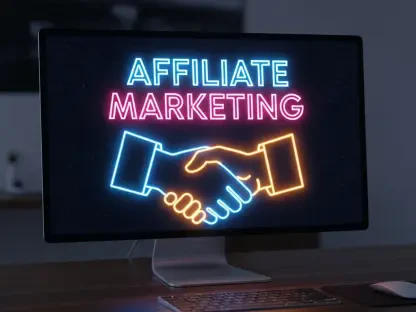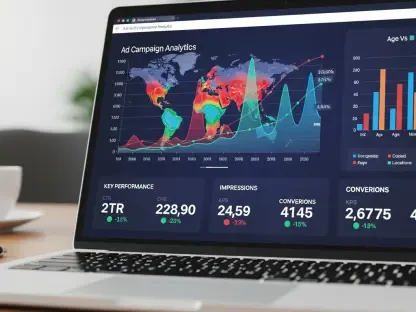What if the tools marketers rely on every day are only revealing a fraction of the full picture, and beneath the polished dashboards of platforms like Google Ads and Meta Ads lies a goldmine of untapped data and automation potential? In the fast-paced world of digital advertising, these platforms offer sleek interfaces that simplify campaign management. Yet, APIs—application programming interfaces—provide the key to accessing this hidden depth, transforming how campaigns are optimized and scaled.
The importance of this shift cannot be overstated. As competition intensifies across digital channels, relying solely on standard interfaces limits the ability to uncover granular insights or streamline repetitive tasks. APIs bridge that gap, enabling marketers to connect systems, automate processes, and gain a competitive edge. This exploration dives into how Google and Meta Ads APIs are reshaping the advertising landscape, offering practical insights and real-world examples of their transformative impact.
Beyond the Dashboard: The Hidden Potential of APIs
Standard ad platform interfaces are designed for ease of use, but they often fall short when it comes to delivering detailed data. Marketers navigating Google Ads or Meta Ads might adjust budgets or review performance metrics with a few clicks, yet these dashboards aggregate information in ways that obscure critical nuances. The result is a surface-level understanding that misses opportunities for deeper optimization.
APIs change the game by granting access to raw, unfiltered data streams. For instance, while a typical dashboard might show overall campaign performance, an API can break down metrics to the level of individual keywords or products. This granular perspective allows for precise adjustments that standard tools simply cannot match, empowering marketers to refine strategies with surgical accuracy.
Moreover, the automation capabilities of APIs eliminate hours of manual work. Tasks like updating bids or generating reports can be scripted to run automatically, freeing up time for strategic thinking. In an industry where every second counts, this efficiency provides a significant advantage over competitors still tethered to manual processes.
The Rising Demand for Data-Driven Precision
Digital advertising has evolved into a complex ecosystem where precision is paramount. With consumers scattered across countless platforms and touchpoints, marketers face mounting pressure to fine-tune campaigns with exacting detail. Standard interfaces often struggle to keep pace, lacking the depth needed to address these sophisticated demands.
APIs for Google Ads and Meta Ads offer a solution by unlocking data that dashboards cannot display. They enable connections between disparate systems, revealing insights that inform both paid search and creative approaches. As AI tools continue to simplify technical barriers, leveraging these APIs has shifted from a specialized skill to an essential tactic for staying relevant in a crowded market.
The stakes are high, as studies indicate that data-driven campaigns can boost engagement by up to 75% when optimized with detailed insights. Marketers who tap into this potential position themselves to outmaneuver competitors, turning raw numbers into actionable strategies. The era of settling for basic analytics is over; depth is the new standard.
Harnessing the Strength of Google and Meta Ads APIs
Google Ads API: Scaling Efficiency Through Automation
The Google Ads API stands as a powerhouse for automating routine tasks at scale. Marketers can script adjustments to bids, budgets, and even ad copy, bypassing the need for manual intervention. Tools built on this API, often inspired by thought leaders in the PPC space, have become indispensable for managing large accounts efficiently.
Beyond basic automation, the API integrates with platforms like Google Cloud, enabling advanced workflows. The recently introduced MCP Server framework further expands possibilities, allowing for customized solutions that were once out of reach for non-developers. This means even complex optimizations can now be tackled without a dedicated coding team.
Meta Marketing API: Precision at the Product Level
For e-commerce marketers, the Meta Marketing API delivers unmatched detail by providing performance metrics at the SKU level. Unlike the standard Meta Ads interface, which often groups product data into broad categories, this API reveals how individual items perform. Such specificity helps identify underperforming products or high-potential categories for targeted adjustments.
This data can be exported to spreadsheets or automated via scripts, creating dynamic labels like “top performers” or “high cart, low conversion” for product sets. These labels enable precise campaign tweaks, ensuring resources are allocated where they matter most. The control offered by this level of granularity is a game-changer for driving ROI.
Cross-Platform Synergy: Connecting the Dots
APIs also shine in their ability to link multiple data sources for richer insights. By integrating Google’s Search Console API with SERP data, for instance, marketers can uncover keyword intent patterns that remain hidden in standard interfaces. This cross-platform approach builds a fuller picture of user behavior across search and social channels.
Custom dashboards and reports built from these integrations provide actionable trends that inform both paid and organic strategies. The ability to connect disparate datasets transforms fragmented information into cohesive narratives, guiding decisions with clarity and confidence. Such synergy is vital for navigating the interconnected digital landscape.
Expert Perspectives: APIs as a Competitive Edge
Industry voices consistently highlight the revolutionary impact of APIs on digital marketing. A prominent PPC specialist has emphasized that scripts using the Google Ads API can “shrink hours of tedious work into mere minutes of review.” This sentiment underscores the efficiency gains that automation delivers to busy professionals.
Case studies further validate these claims. One e-commerce brand leveraged the Meta Marketing API to pinpoint underperforming SKUs, recalibrating campaigns to achieve a 20% increase in ROI within just one month. This tangible result illustrates how API-driven insights translate directly into bottom-line improvements.
Feedback from the field also reveals a broader shift in mindset. With AI tools simplifying API interactions, marketers report newfound freedom to focus on strategy rather than logistics. The consensus is clear: embracing APIs is no longer optional but a critical step for those aiming to lead rather than follow in the industry.
Practical Steps to Tap Into API Power
Define Clear Objectives First
Before diving into APIs, pinpoint the specific outcomes desired—whether automating budget shifts, accessing detailed metrics, or crafting tailored reports. Engaging with peers or using AI tools to brainstorm relevant use cases can sharpen focus. A well-defined goal ensures efforts remain aligned with campaign priorities.
Accessing the Meta Marketing API
Begin with a Business Manager account tied to an ad account and product catalog. Through Meta’s developer portal, create an app and secure an access token with permissions like ads_read and catalog_management. The Graph API Explorer tool simplifies this process, making it accessible even without coding expertise.
Launching with Google Ads API
Start by requesting a developer token via an MCC account and setting up a Google Cloud Project to enable the API. Once credentials are in place, use AI assistance or pre-built scripts to automate tasks like bid updates or negative keyword management. Testing small-scale projects first helps refine the approach before scaling.
Embrace a Systems-Oriented Approach
View marketing as an integrated system rather than a static dashboard. Break down API projects into manageable phases, testing each step to ensure reliability. Curiosity and persistence outweigh the need for immediate technical mastery, especially with AI support readily available to bridge knowledge gaps.
Reflecting on the Journey of API Adoption
Looking back, the adoption of Google and Meta Ads APIs marked a turning point for many marketers. The ability to access deeper data and automate mundane tasks reshaped workflows, allowing teams to prioritize strategy over manual labor. Those who embraced this shift saw campaigns transform from reactive to proactive, driven by insights previously out of reach.
The path forward was clear even then. Marketers were encouraged to start small, experimenting with a single automation or data pull to build confidence. Collaboration with peers and leveraging AI tools proved invaluable for overcoming initial hurdles, paving the way for more ambitious projects.
As the digital landscape continues to evolve, staying ahead demands a commitment to exploring these tools further. The next step involves identifying one specific challenge—be it reporting inefficiencies or optimization bottlenecks—and crafting an API-driven solution to address it. This focused approach ensures continuous growth in a field where innovation never stops.









